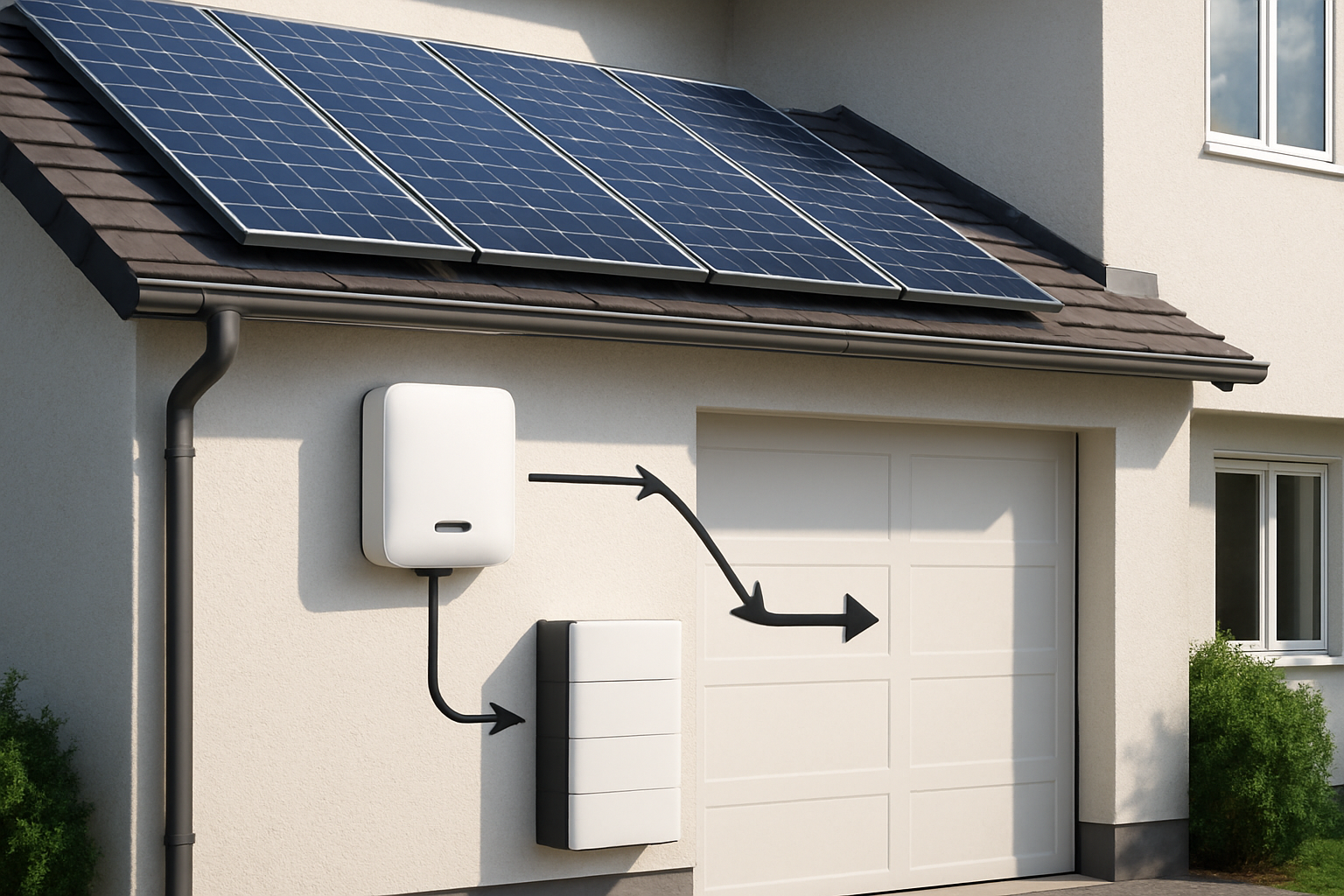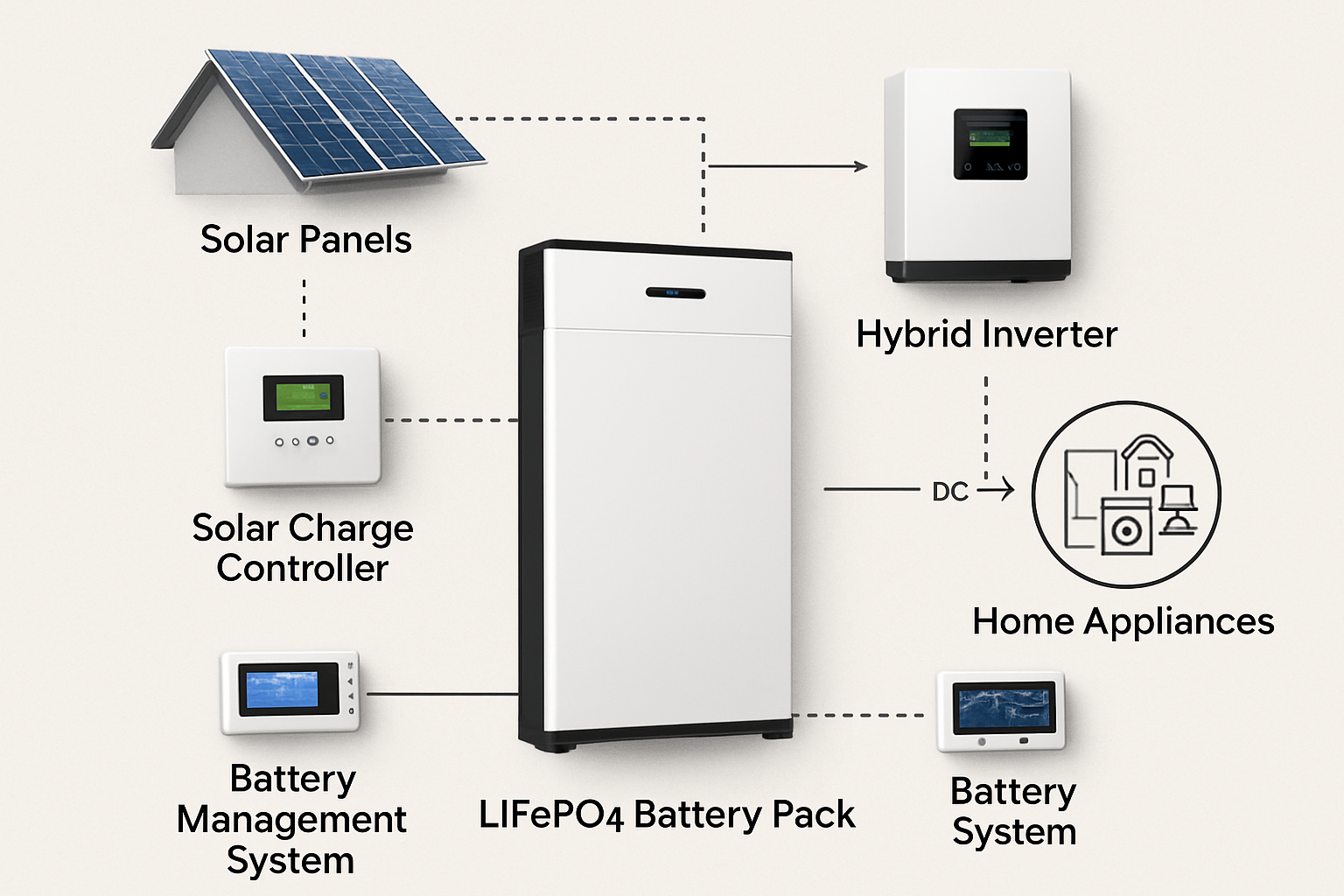Harnessing the sun's power is a practical step toward managing energy costs and reducing your environmental footprint. As you consider a solar power system for your home, you'll encounter two primary configurations: off-grid and grid-tied. Each offers a distinct approach to energy production and consumption. The choice between them depends on your location, energy goals, budget, and desire for independence.
This guide provides a comprehensive overview of both systems. We will examine their technical differences, financial implications, and the critical role of battery storage. With this information, you can make a well-informed decision that aligns with your specific needs.
Understanding the Core Concepts: What Defines Each System?
At a fundamental level, the key difference between these systems is their relationship with the traditional utility grid. One works in partnership with the grid, while the other operates in complete isolation.
Grid-Tied Solar Systems: A Partnership with the Utility
A grid-tied solar system is the most common type for residential properties. It is directly connected to the local utility's power grid. Here’s how it operates:
- Solar panels convert sunlight into direct current (DC) electricity.
- A solar inverter then transforms this DC electricity into alternating current (AC), the standard form of electricity used to power your home appliances.
- The AC power flows to your home's electrical panel and is used by any active appliances.
- If the panels produce more electricity than the home is using, the surplus power is sent back to the utility grid.
This process of sending excess power to the grid is managed through a policy called net metering. Under this arrangement, your utility company credits you for the electricity you contribute. When your panels aren't producing power, such as at night, you draw electricity from the grid, and your credits can offset the cost. A significant limitation of standard grid-tied systems is that they automatically shut down during a grid outage for safety reasons, to prevent sending power into lines that utility workers may be repairing.
Off-Grid Solar Systems: Your Personal Power Plant
An off-grid solar system operates completely independently from the utility grid. It is a self-contained power station for your property, making it a suitable choice for remote homes, cabins, or farms where grid access is unavailable or prohibitively expensive.
The essential components of an off-grid system include:
- Solar Panels: Capture solar energy.
- Charge Controller: Regulates the flow of electricity from the panels to the batteries to prevent overcharging.
- Battery Bank: The core of the system, storing excess energy for use when the sun isn't shining.
- Inverter: Converts the stored DC power from the batteries into usable AC power for your home.
With an off-grid setup, you are entirely responsible for your energy production and storage. This requires careful planning to ensure your system can meet your energy needs, even during periods of low sunlight.
A Head-to-Head Comparison: Key Decision Factors
Choosing between an off-grid and a grid-tied system involves weighing several critical factors. Your priorities regarding cost, reliability, and maintenance will heavily influence your decision.
System Costs and Financial Incentives
The initial investment is a primary consideration. Grid-tied systems are generally less expensive upfront because they do not require a costly battery bank. An off-grid system's price is significantly higher due to the necessity of batteries, which can account for a large portion of the total cost. For example, a typical grid-tied system might cost between $8,000 and $26,000, while an off-grid system can range from $25,000 to over $65,000, depending on its size and storage capacity.
Homeowners installing solar systems can often take advantage of financial incentives. The Residential Clean Energy Credit, for instance, provides a 30% tax credit for the costs of new, qualified clean energy property, including solar panels and battery storage, for installations from 2022 through 2032. These incentives can substantially reduce the net cost of both system types, but the lower initial price of grid-tied systems often makes them more financially accessible.
Reliability and Power Access
A grid-tied system's reliability is directly linked to the stability of the local utility grid. You have access to a seemingly limitless supply of power, but you are also vulnerable to grid-wide power outages. In contrast, an off-grid system provides immunity from public blackouts. Your power supply depends entirely on your system's ability to generate and store energy. This requires diligent energy management, as you must operate within the limits of what your system can provide.
Maintenance and System Management
Grid-tied systems require minimal maintenance, typically limited to periodic cleaning of the solar panels. The utility grid handles all the backup power needs. Off-grid systems demand a more hands-on approach. You must monitor battery health, state of charge, and overall system performance to ensure a consistent power supply. This added complexity underscores the importance of using durable, high-quality components designed for long-term, reliable operation.
Disclaimer: This article provides general information and is not intended as financial or legal advice. Consult with a qualified professional before making any investment decisions.
| Feature | Grid-Tied System | Off-Grid System |
|---|---|---|
| Initial Cost | Lower (no batteries required) | Higher (requires significant battery investment) |
| Energy Independence | Partial; reliant on the grid for backup and nighttime power. | Complete; fully independent from the utility grid. |
| Reliability | Reliable as the utility grid; vulnerable to blackouts. | System-dependent; immune to grid failures but limited by generation/storage. |
| Key Components | Solar Panels, Inverter, Meter. | Solar Panels, Charge Controller, Battery Bank, Inverter. |
| Maintenance | Minimal; primarily panel cleaning. | Higher; requires battery monitoring and system management. |
| Best For | Urban/suburban homes with reliable grid access. | Remote properties, cabins, farms, or those seeking total energy autonomy. |
The Heart of Independence: The Role of Battery Storage
For anyone serious about energy independence, battery storage is the central component. Its role differs slightly between off-grid and grid-tied systems, but its importance is growing across the board.
Why Battery Storage is Non-Negotiable for Off-Grid Living
In an off-grid system, batteries are not optional; they are the foundation of a functional power supply. They store the excess energy generated during sunny days to power your home at night, on cloudy days, or during periods of high demand. The performance of your entire system hinges on the quality and capacity of your battery bank.
Lithium Iron Phosphate (LiFePO4) batteries have become the preferred choice for modern off-grid systems. They offer significant advantages over traditional lead-acid batteries, including a much longer cycle life, higher efficiency, enhanced safety, and minimal maintenance needs. Investing in high-performance LiFePO4 batteries ensures a more reliable and durable energy storage solution, which is crucial when you are your own utility. Properly sizing your battery bank is also critical; for more on this topic, see 5 Lithium Battery Sizing Mistakes for Off-Grid Solar Systems.
Enhancing Grid-Tied Systems with Battery Backup
While standard grid-tied systems don't include batteries, adding a storage component creates what is known as a hybrid solar system. This configuration offers the best of both worlds: the cost-saving benefits of a grid connection and the peace of mind of battery backup. With a hybrid system, you can store excess solar energy to power your home during a grid outage, providing a critical layer of energy security. You can explore this concept further in our Should You Go Off-Grid? A Guide to Home Battery Storage.
Making the Right Choice for Your Home
The global shift toward renewable energy is undeniable. The International Energy Agency (IEA) reports that solar PV is on a trajectory to become a leading source of electricity, a trend driven by both large-scale installations and residential adoption. Similarly, data from the U.S. Energy Information Administration (EIA) shows that solar is the fastest-growing source of electricity in the U.S., with small-scale residential solar making a significant contribution.
Who Should Choose a Grid-Tied System?
A grid-tied system is an excellent choice for most homeowners in urban and suburban areas with a stable power grid. If your primary goals are to lower your monthly electricity bills, reduce your carbon footprint, and make a sound financial investment with a quicker return, this is likely the right path for you. The ability to leverage net metering maximizes your savings with a lower upfront cost.
When is an Off-Grid System the Best Fit?
An off-grid system is the definitive solution for properties without access to the utility grid. It is also the ideal choice for individuals who prioritize complete energy independence and self-sufficiency above all else. If you are building a remote cabin, powering a farm, or simply wish to be insulated from utility rate hikes and grid failures, an off-grid system provides the ultimate control over your power. For a real-world example, read our Case Study: How a Farm Went Off-Grid with LiFePO4 Batteries.
To help you navigate this choice, our Off-Grid or Grid-Tied: A Decision Framework for Homeowners provides a structured set of questions to consider.
Building Your System with Confidence
Whether you choose a grid-tied, off-grid, or hybrid system, the quality of your components is paramount. With years of experience in the solar and energy storage industry, we have focused our expertise on manufacturing robust lithium batteries and developing integrated energy storage systems (ESS). Our commitment is to provide reliable and scalable solutions. Our high-performance LiFePO4 batteries and complete ESS packages are engineered for safety and longevity, providing a solid foundation for achieving your energy independence goals.
Your Path Forward in Solar Energy
The decision between an off-grid and a grid-tied solar system is a choice between two different philosophies of energy management: partnership versus autonomy. A grid-tied system offers a practical, cost-effective way to reduce your energy bills by working with the existing infrastructure. An off-grid system represents a commitment to complete self-reliance, giving you full control over your power supply.
By evaluating your location, budget, energy needs, and desire for independence, you can confidently select the system that will best serve you for years to come. The journey toward energy independence starts with a clear understanding of your options and a commitment to quality components.





Leave a comment
All comments are moderated before being published.
This site is protected by hCaptcha and the hCaptcha Privacy Policy and Terms of Service apply.